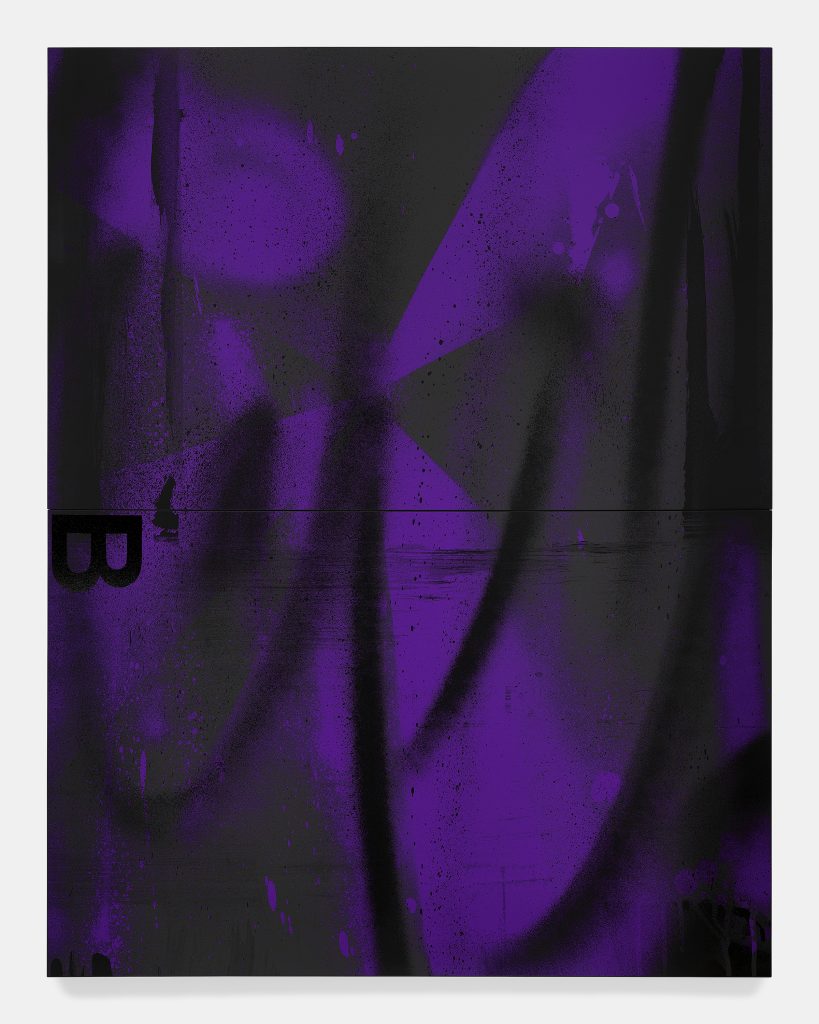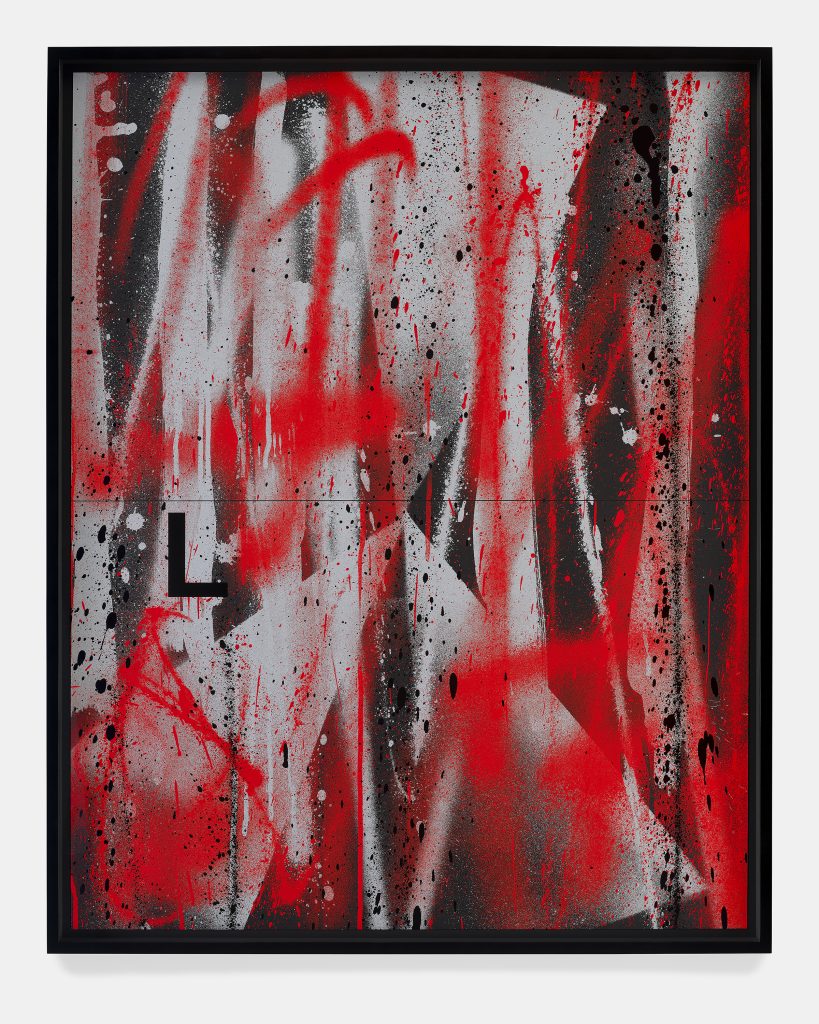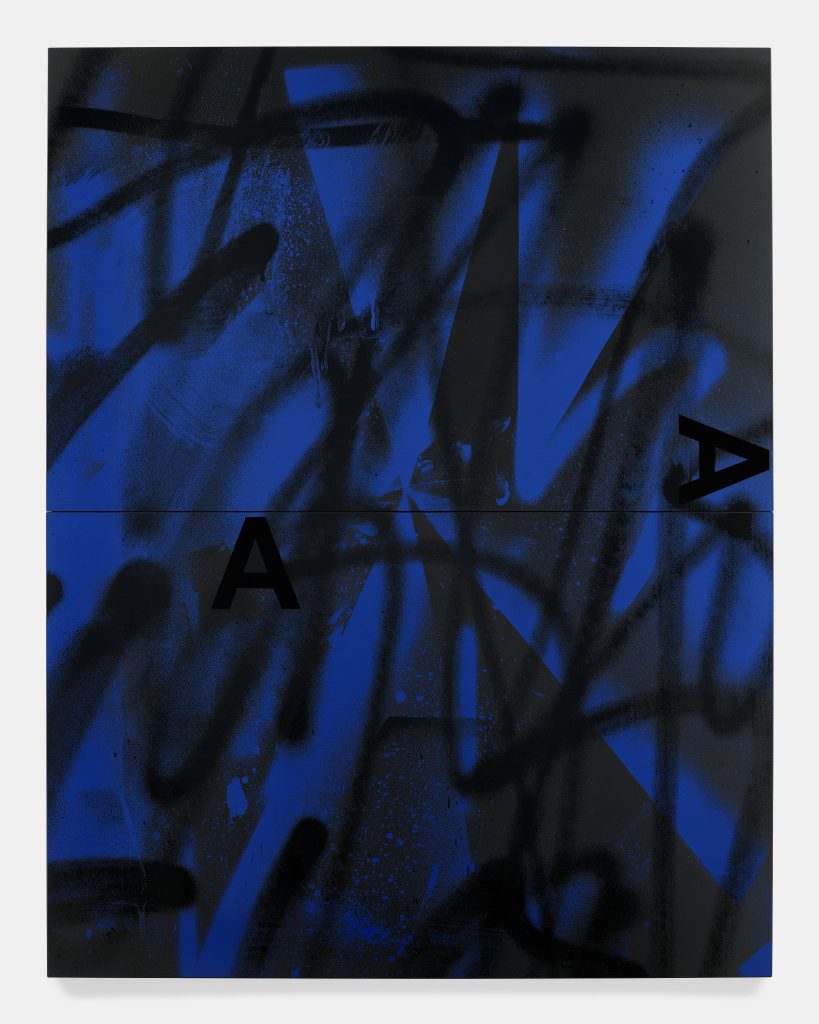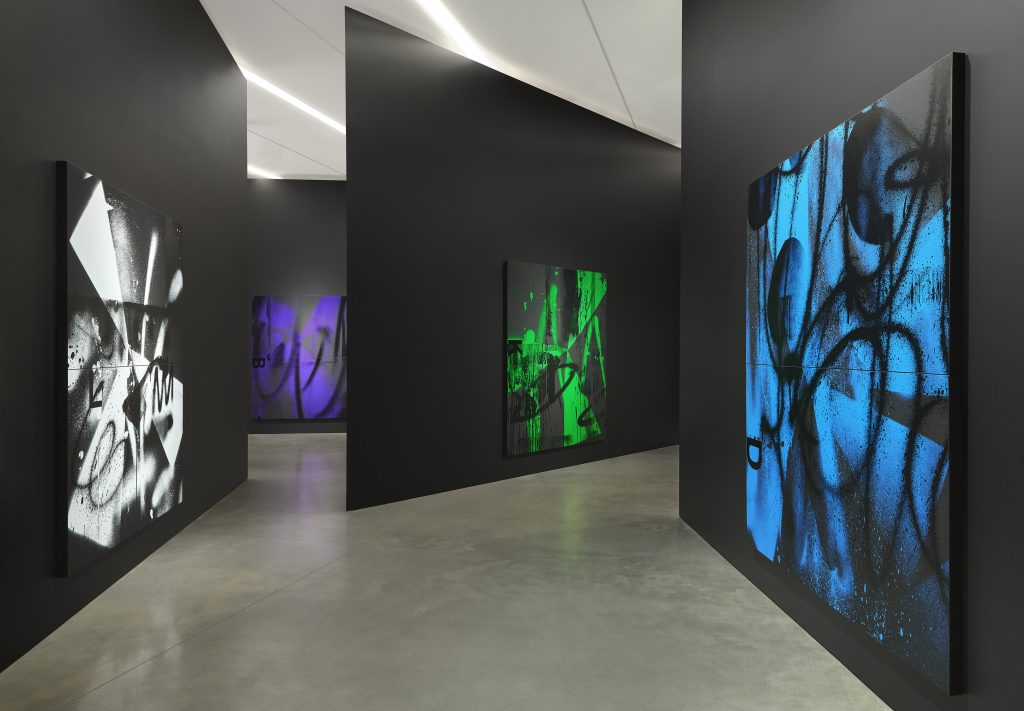Walking through “An Abstraction” — a new exhibition from artist Adam Pendleton at Pace Gallery in New York City’s Chelsea neighborhood — feels like walking through the beating, fleshy heart of a mechanized giant.
Considering what Pace shared about Pendleton’s experiential approach to crafting images, you could take that imagining even further and call it a physical manifestation of the collective unconscious, clearly evident in the nature of the works.
Using materials including silkscreen ink and black gesso for the pieces in Pace’s sweeping, downstairs gallery space on W 25th Street, Pendleton’s work pulses, leaps, crashes, and then rockets forward again. Considered as a whole, there’s a surprisingly uplifting unity across this subset of Pendleton’s oeuvre, as though he’s capturing a character arc, a fantastical tale of successfully battling it out in some sci-fi environment, or a similar kind of situation.
Each included piece from “An Abstraction” feels personal, though, to the point that you might start sensing an internal, emotional mirror of the streaks of color, whether tense or more soaring.
The Content of Pendleton’s Work
As for what the works actually look like, Pendleton’s practice here is — to start from the foundation captured in the title — abstract.
He moves between flowing streams of color and sharply defined areas in simultaneity with sometimes making the process of crafting the images central for the viewer yet obscuring it at other times, when the tone gets ethereal. Black is a key color across the exhibition, but the pictorial works also incorporate attention-grabbing gold, fluorescent washes of green, and similarly styled colors in which there’s plenty of internal light but the hues feel sharp.
Pendleton applies the ensnaring colors across sharp slices of space and snaking rivers of form, crafting a world hinging on a life-like thud into unpredictability, though the occasional piercing sharpness points to Pendleton clearly drawing from outside our most immediate, sensory, physical experiences for this immersive Ferris wheel of color. Exhibition materials made publicly available by Pace talk about Pendleton looking in his art towards the involvement in our modern lives of technologically delivered tidal waves of information, and that’s nicely evident in the work.
Pendleton’s sweeping applications of gesso and ink suggest decaying street advertising from a purely aesthetic standpoint, but his work leans heavily on the mental and emotional side rather than sticking to straightforward conveyances of information.

Experiential Extremes, Presented as One
The rhythmic back-and-forth between Pendleton’s curvatures and more solidly defined areas of color is a standout, as he captures a place where the two sides effectively fall into each other. There’s rarely if ever any kind of neat resolution to the visual tangles of Pendleton’s enthralling work; instead, you could bounce between the extremes of form for ages, simmering in how the pieces lay out a side of life that defies ideals of orderly description.
Within each wide-ranging artwork, you might end up with the sense that everything is happening at once, whether mediated through a color that’s blindingly bright, grippingly jarring, or similarly rich.
Across “An Abstraction,” Pendleton’s work combines into somehow visible pools of experience, whether tempered by any real-world human emotion from ecstasy to pain (or strain). None of these works depict any real-world environment or any physical place that anybody has ever actually visited, but if you just keep looking, Pendleton suggests you really have been there, whether in a dream or in the furthest recesses of the still unfolding mind. In the absence of a visual center, Pendleton pushes your perception outwards to the confines of the individual art piece and experiences of looking as a whole, invoking familiar wavelengths.

An Architectural Installation & Welcome Confusion
Pendleton’s paintings and works on paper across “An Abstraction” are housed at Pace on the walls of a site-specific architectural intervention comprised of five black, triangular structures, moving when among them as if eternally upwards. I was actually a bit confused when in the exhibition the first time, as I didn’t initially ascertain the actual nature of the structures and realized I missed some sides.
But honestly, even my confusion was fascinating to me, because it pushed my experience of the exhibition — like the individual works themselves — out of line with expectations of strict order and into something more free-flowing. It left me with a physical mirror of the mental and emotional experiences of the wall-hanging images from Pendleton, bouncing semi-erratically from a perceptual pole towards emptiness (the gallery’s empty spaces) and back towards perception.
In a manner I found true to life, Pendleton ultimately captures a drifting, shimmering surprise where both the internal and external are evolving in a manner slipping beyond your control. There’s a sweeping ocean of atmosphere in the works but also a pleasantly familiar face — even if that “face” is just rhetorical as everything lingers beyond three-dimensional life’s hard-edged, physical side.
Pendleton is based in New York and has a 2025 exhibition coming up at the Hirshhorn Museum and Sculpture Garden in Washington, D.C., that’ll be a can’t-miss event, no doubt.
“Adam Pendleton: An Abstraction” continues at Pace Gallery through August 16.

Featured image: Adam Pendleton: An Abstraction
540 West 25th Street, New York, NY 10001
May 3 – August 16, 2024
Photography courtesy Pace Gallery
You may also like
-
Diana Kurz at Lincoln Glenn in New York: A Review of a Shining Art Exhibition
-
Dustin Hodges at 15 Orient in New York City: An Ensnaring Exhibition at an Exciting Gallery
-
Maren Hassinger at Susan Inglett Gallery in New York: Reviewing an Uplifting Art Exhibition
-
Enzo Shalom at Bortolami in New York City: Reviewing an Entrancing Exhibition of Paintings
-
“Ben Werther: Townworld” at Amanita in New York City: Reviewing a Richly Memorable Art Exhibition
